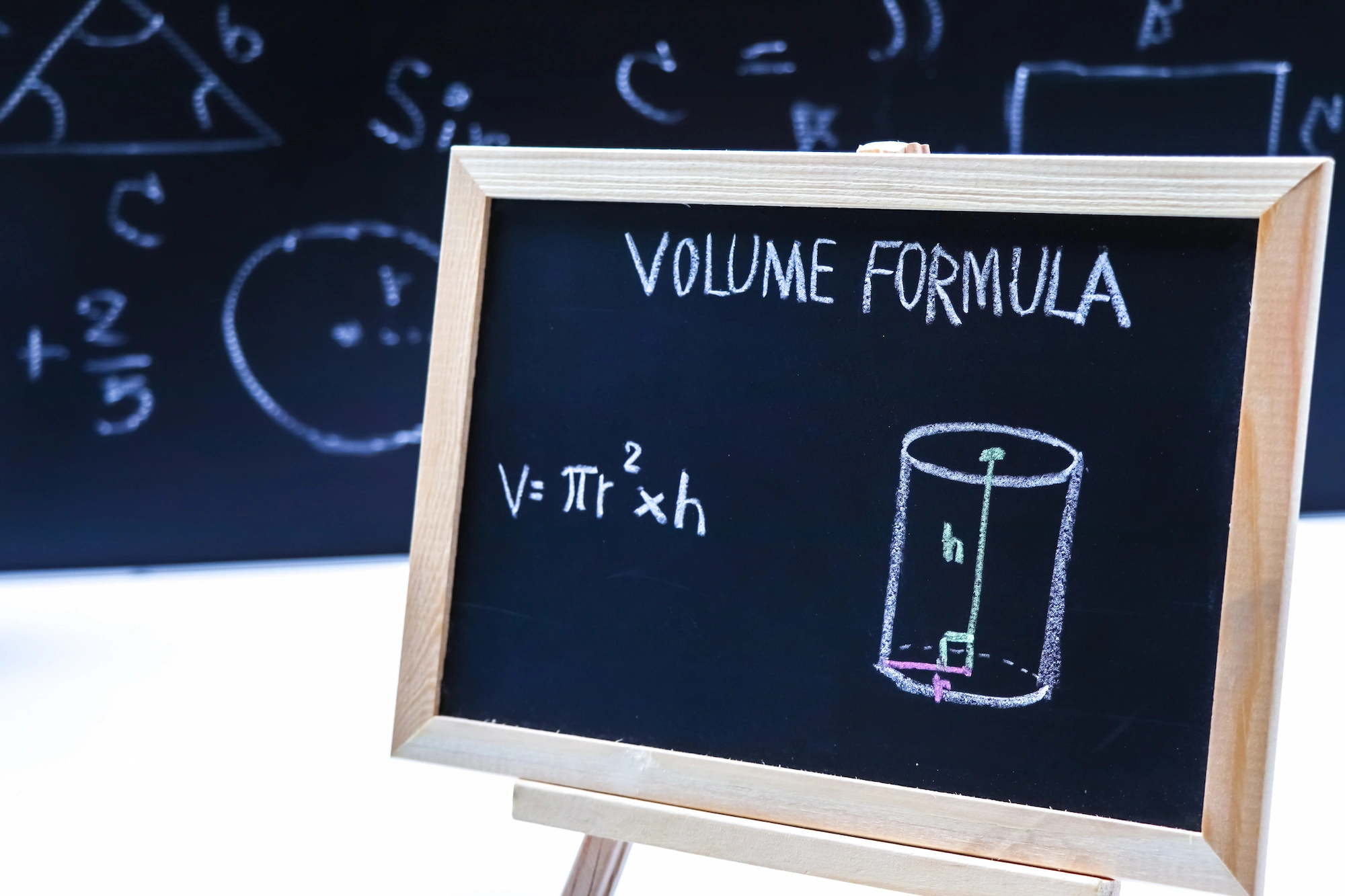As you delve into the world of mathematics, understanding volume calculations becomes a vital skill. One of the most common three-dimensional shapes encountered in geometry is the cylinder. Whether you’re solving real-world problems or exploring advanced mathematical concepts, knowing how to calculate the volume of a cylinder is essential. In this guide, we’ll walk you through the step-by-step process, provide practical examples, and even test your understanding with exercises and a quiz. Let’s dive in!
Introduction
Before we dive into the calculations, let’s understand the importance of volume calculations and get acquainted with the basic properties of a cylinder. Understanding how to calculate the volume of a cylinder not only helps in solving practical problems but also lays the foundation for more advanced mathematical concepts. If you still struggle with this concept after reading this article, an online math tutor might be useful to help you grasp the formula and its many applications.
Real-Life Applications of Cylinder Volume Calculations
Cylinder volume calculations have numerous applications in real-life scenarios beyond the classroom. Here are a few examples:
- Environmental Conservation: When calculating the volume of a tree (which can often be approximated as a cylinder), you can estimate the amount of carbon dioxide it can absorb, essential data for climate change studies.
- Industrial Manufacturing: Manufacturers often use cylinders for storage and transport. For instance, knowing the volume of a gas cylinder is crucial to ensure safe and efficient usage.
- Construction and Engineering: In building projects, cylindrical pillars are frequently used. Knowing the volume helps in estimating the amount of concrete needed, aiding in budgeting and planning.
- Medicine: Medical imaging techniques like CT scans can approximate organs like the heart or lung as cylinders to estimate their volume, providing valuable data for diagnosis and treatment plans.
Understanding the Formula
To find the volume of a cylinder, we use a simple formula: V = πr²h. Let’s break down the formula and understand the meaning of each variable. The radius (r) represents the distance from the center of the circular base to any point on its edge, and the height (h) refers to the perpendicular distance between the two bases.
Step-by-Step Calculation
Calculating the volume of a cylinder involves a straightforward process:
- Identify the radius and height of the cylinder.
- Plug the values into the volume formula.
- Perform the necessary calculations, including squaring the radius and multiplying by height.
- Simplify the final answer by evaluating any numerical expressions.
Quiz
Test your understanding and application of concepts with a short quiz. This quiz will challenge you to calculate the volume of various cylinders and apply your knowledge to solve practical problems. Feel free to revisit specific sections if you need a refresher before attempting the quiz.
- A cylinder has a radius of 5 cm and a height of 10 cm. What is its volume?
- A cylindrical jar of honey has a volume of 377 cm³ and a radius of 7 cm. Can you calculate the height of the jar?
- A cylindrical can of paint has a height of 15 cm and a volume of 706.5 cm³. What is the radius of the can?
- A cylindrical water tank has a radius of 3 m and a height of 10 m. What is its volume?
Remember to use the formula (V=πr²h) and round your answers to the nearest whole number if necessary. Good luck!
Quiz Answers
- The volume of a cylinder is calculated by the formula V = πr²h. Given that the radius (r) is 5 cm and the height (h) is 10 cm, we plug these values into the formula to find the volume. V = 3.14 * (5 cm)² * 10 cm = 785 cm³.
- To find the height of the jar, we can rearrange the volume formula to solve for h: h = V / (πr²). Given that the volume (V) is 377 cm³ and the radius (r) is 7 cm, we find the height of the jar: h = 377 cm³ / (3.14 * (7 cm)²) ≈ 2.44 cm.
- Similar to the previous question, we can rearrange the volume formula to solve for r: r = √(V / (πh)). Given that the volume (V) is 706.5 cm³ and the height (h) is 15 cm, we can calculate the radius: r ≈ √[706.5 cm³ / (3.14*15 cm)] ≈ 4.84 cm.
- Using the volume formula V=πr²h, with the radius (r) being 3 m and the height (h) being 10 m, we find the volume: V = 3.14 * (3 m)² * 10 m = 282.6 m³.
Conclusion
Congratulations on mastering the art of calculating the volume of a cylinder! In this guide, we have explored the importance of understanding volume calculations, offered real-world examples, delved into the formula for finding the volume of a cylinder, provided step-by-step instructions, and reinforced your learning with a quiz. Remember, mastering these calculations lays the foundation for more advanced mathematical concepts. Keep practicing, stay curious, and continue exploring the fascinating world of mathematics!






